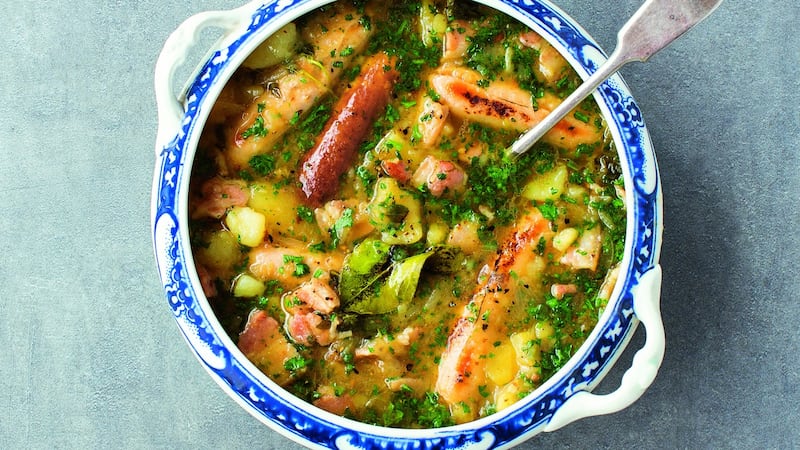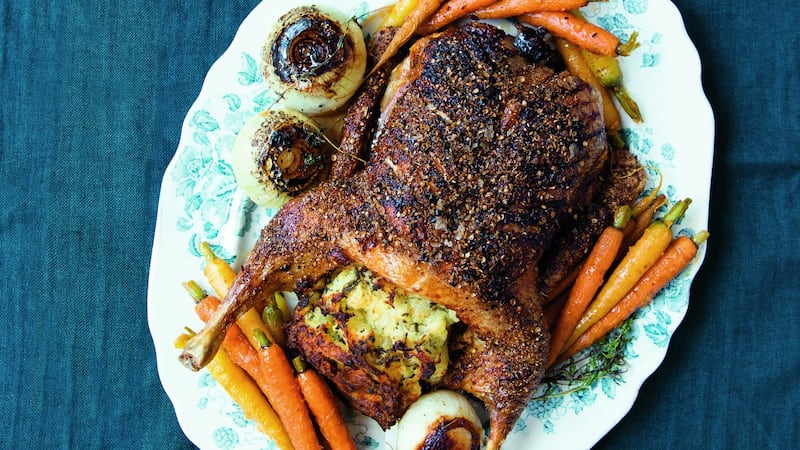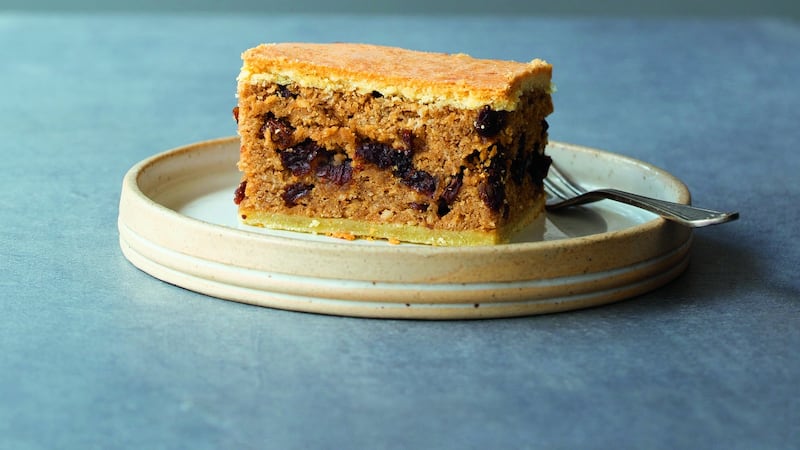Before writing my new book, I had one misgiving: did the world need another book about Irish food? Surely there were enough already. But each generation must ask the question anew: what is Irish food? To try and define Irish food for a new generation was my ultimate aim in writing The Irish Cook Book.
At the start, because of our restaurant Aniar, I was much more concerned with the contemporary, or what I understood to be the position of contemporary Irish food. Undoubtedly, the influences of the Nordic food movement played a huge unconscious part in the redefinition of our foodscape, with its emphasis on the wild and the local.
But I was mistaken to think that this was the only way to deliberate about Irish food, to construct a narrative for it and tell its story. I wrongly imagined that Ireland had always been inward looking. But the truth was far from this.
Since people arrived on this island 10,000 years ago, we have always been outward looking; we just imagined we weren’t. Successive waves of migrants changed the Irish food landscape every so often, from the first farmers to the Celts, Vikings and Normans. We were never just one thing, but always accumulating more and more ways of being that would eventually be called Irish.
From oysters and seaweed to cinnamon and pies, no one ingredient can ever define Irish food. Though I would love the beauty of our natural larder to take precedence, spices from the other side of the world are just as Irish, now. It may seem difficult to appreciate this, in an age of anxiety regarding migration. Yet the primary principle of food is migration. We cannot stop food moving, crossing borders.
I hope when readers and cooks encounter my book they will see the many sides of food on this island. For that is the only way to define a food culture: to take into account all aspects of its heritage.
This book stands on the shoulders of the many great women food writers that Ireland has produced: Florence Irwin, Theodora Fitzgibbon, Maura Laverty, Monica Sheridan, Myrtle Allen. Without their work, I would be lost. They are all too often overlooked.
Of course there are many others, too; chefs such as Ross Lewis and Gerry Galvin and academics like Regina Sexton and Máirtín Mac Con Iomaire. All have contributed to this new story of Irish food. I hope old favourites and new-found loves in this book will keep you going until the next instalment.
[ EventbriteOpens in new window ]
CODDLE

Serves: eight
Coddle, or Dublin coddle to be more precise, is a dish made up of leftover sausages and bacon. Traditionally, the sausages and bacon were cut up and combined with onions and potatoes and left to stew in a light broth. Though often unappetising to look at, the dish was made famous by several Irish writers, from Jonathan Swift to James Joyce and Seán O'Casey.
Modern versions include barley and carrots. It is essentially a dish that grew out of poverty and famine and then migrated into the working-class areas of Dublin at the beginning of the 20th century to become a dish of central importance to the people who lived there.
Often it contained a drop of Guinness (or it was eaten with plenty of pints and soda bread). It is said that the housewives would prepare the coddle during the day and it would sit on the stove until the men returned home from the pub.
The word itself is derived from the verb “to coddle” or “to cook” (from French caulder). With its associations of poverty, it is surprising to find “authentic” recipes, especially given the status of the dish as being made with whatever leftovers were to hand (as in pig’s trotters/feet, pork ribs etc).
Some associate it with the Catholic Church’s insistence of abstaining from meat on a Friday. Coddle was a way of using up the bacon and sausages on a Thursday. In this recipe, I fry the ingredients before covering them with the stock, but traditionally they were just layered and simmered until cooked.
Ingredients
2 tbsp rapeseed oil, plus extra if needed
500g sausages, cut into pieces if preferred
500g streaky (regular) bacon, cut into pieces
500g onions, sliced
2 tbsp chopped thyme
2 bay leaves
1 litre chicken stock
1 kg (9 medium) potatoes, peeled and cut into chunks
4 tbsp chopped parsley
Freshly ground black pepper
Method
1. Warm the oil in a large pan over a medium heat. Add the sausages and bacon and fry for about 10 minutes until they have a nice colour. Remove the meat from the pan and set aside.
2. Add the sliced onions to the pan and a little more oil if necessary. Reduce the heat and fry for about 10 minutes so that the onions caramelize slowly.
3. When the onions have a nice colour, return the sausages and bacon to the pan and add the thyme and bay leaves. Cover with the chicken stock (broth) and return to the boil. Reduce the heat to a simmer and add the potatoes. Cook for about 30 minutes.
4. Add the chopped parsley and plenty of black pepper and serve.
SPICED DUCK WITH POTATO AND SAGE STUFFING AND APPLE SAUCE

Serves: four
Ingredients
500g (about eight medium) potatoes, peeled
1 whole large duck
A little duck fat
1 onion, diced
1 tsp finely chopped sage
Sea salt
For the apple sauce:
100g soft brown sugar
100ml dry sherry
750g (about five) cooking apples, peeled, cored and roughly chopped
A little fresh grated ginger, to taste
For the spice mix:
1 tsp juniper berries
1 tsp coriander seeds
1 star anise
1 tsp fennel seeds
Method
1. Preheat an oven to 180°C/350°F/ Gas Mark 4.
2. Boil the potatoes in a large pan of salted water over a medium-high heat for about 15 minutes until you can pass a knife through them. Strain and mash.
3. Meanwhile, for the apple sauce, dissolve the sugar in the sherry in a medium pan over a medium heat. Add the apples and fresh ginger. After it comes to the boil, reduce the heat to a simmer and stew for about five minutes until the apples are soft. Put into a food processor and blend until smooth.
4. For the spice mix, toast the spices in a dry pan for a few minutes and blend in a spice grinder. Add salt to taste. Keep in an airtight jar.
5. Heat the duck fat in a small pan over a medium heat and fry the onion with the sage until soft and translucent. Combine with the mash potatoes to make the stuffing.
6. For the duck, stuff the duck with the potato stuffing. Score the skin and season it with the spice mix. Roast in the preheated oven for 1 hour 30 minutes or until a core temperature of 65°C/150°F is reached on a meat thermometer. Allow to rest for 10 minutes before carving.
GUR CAKE

Makes 36 squares
Ingredients
For the shortcrust pastry:
350g plain flour
75 g caster sugar
175g cold butter, cubed
1 egg, beaten
A pinch of sea salt
For the cake:
175ml milk, plus extra for brushing
Rind of 1 lemon, chopped (or use the zest)
2 eggs, beaten
350g (about 12 slices) leftover cake (I use sponge), broken up into small pieces
225g muscovado sugar
225g raisins
75g plain flour, plus extra for dusting
50g (4 tbs) butter, softened, plus extra for greasing
2 tbsp mixed spice
1 tsp baking powder
Icing sugar, for dusting (optional)
Method
1. To make the pastry, combine the flour and sugar in a bowl and rub in the butter using your fingertips until the mixture resembles breadcrumbs. Add the egg and a little ice-cold water to form a dough. Rest the dough in the refrigerator for 1 hour.
2. Preheat the oven to 180°C/350°F/ Gas Mark 4.
3. Divide the pastry into two pieces and roll it out on a floured surface into two rectangles the same size as a rectangular 34 × 20-cm baking pan. Place one piece of pastry on the base of the pan. Refrigerate the second piece of pastry until needed.
4. To make the cake, warm the milk with the lemon rind in a small pan over a low heat. Cool slightly and whisk in the eggs. Combine the rest of the ingredients in a large mixing bowl with the milk mixture. Spread the mixture evenly over the pastry in the pan and top with the other piece, tucking in any edges. Brush with a little milk.
5. Bake in the preheated oven for 45 minutes until the pastry is golden brown and the inside is bubbling. Allow to cool in the pan, then dust with icing sugar, if desired, and cut into squares or rectangles.












